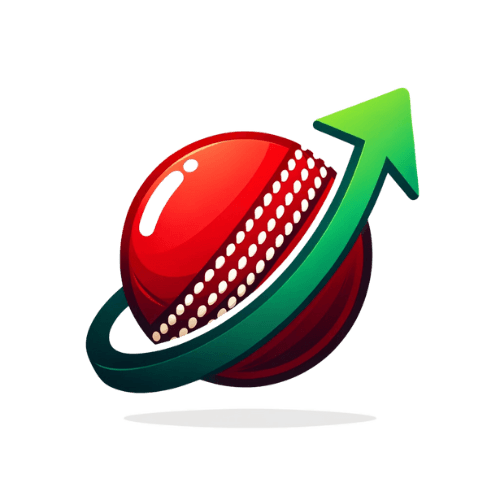Find the Best Betting Odds in 2026
Understanding sports betting odds is the foundation of successful wagering, whether you're a beginner or looking to refine your betting strategy. Before placing any bet, you must grasp how odds work, what they represent, and how to read different formats. This comprehensive guide will walk you through everything you need to know about betting odds to make informed wagering decisions.
Top casinos








guides
Related News

What Are Sports Betting Odds and Why Do They Matter?
Sports betting odds serve multiple purposes in the gambling ecosystem. They represent the probability of an event occurring, determine potential payouts, and help sportsbooks balance action on both sides of a wager. However, it's crucial to understand that odds don't always reflect the true probability of an outcome – they're designed to ensure profitability for bookmakers while providing betting opportunities for players.
The primary objective of sportsbooks has remained consistent since the early days of sports betting: to balance action on both sides of a bet while maintaining a profit margin. Modern online sportsbooks use sophisticated algorithms and software to set odds, but the fundamental principle remains unchanged.
The Three Main Types of Betting Odds Formats
American (Moneyline) Odds: The US Standard
American odds, also known as moneyline odds, are the predominant format used in the United States. These odds work differently for favorites and underdogs, making them unique among betting formats.
For Favorites (Negative Odds): When betting on a favorite, odds are displayed with a negative sign (-) showing how much money you must wager to win $100. For example, if the Kansas City Chiefs are listed at -760, you would need to bet $760 to win $100. Your total payout would be $860 ($760 original bet plus $100 profit).
For Underdogs (Positive Odds): Underdog odds feature a plus sign (+) indicating potential winnings for every $100 wagered. If the Pittsburgh Steelers are listed at +585, a $100 bet would return $585 in profit plus your original $100 stake, totaling $685.
The larger the spread between odds, the more significant the perceived difference in winning probability between competitors.
Fractional (British) Odds: The Traditional Format
Fractional odds, commonly used by British and Irish bookmakers, are expressed with a slash (/) or hyphen (-). This format shows the ratio of profit to stake.
How Fractional Odds Work:
- Odds of 6/1 (six-to-one) mean you win $6 for every $1 wagered
- A successful $10 bet at 6/1 returns $70 ($60 profit plus $10 stake)
- The formula for total payout is: Tp = S(N/D) + S, where Tp is total payout, S is stake, and N/D is the fractional odds
Practical Example: Consider these hypothetical NBA Finals odds:
- Miami Heat: 13/5
- Golden State Warriors: 9/2
- LA Lakers: 7/1
A $100 bet on Miami would return $360 total ($260 profit plus $100 stake). The same bet on Golden State would return $550 total, while betting on the Lakers would yield $800 total if successful.
Decimal (European) Odds: The Simplest Format
Decimal odds are widely considered the most straightforward format, popular in Europe, Australia, Canada, and New Zealand. The decimal number represents the total payout per dollar wagered, including your original stake.
Understanding Decimal Odds: The calculation is simple: Total Payout = Stake × Decimal Odds
Example from Esports: Using 2023 League of Legends World Championship odds:
- DRX: 4.00
- T1: 1.30
A $100 bet on DRX returns $400 total ($300 profit plus $100 stake). The same bet on T1 returns $130 total ($30 profit plus $100 stake). Lower decimal odds indicate higher probability and lower risk.
How Sportsbooks Build in Their Advantage
Understanding the house edge is crucial for serious bettors. Sportsbooks don't offer true odds – they incorporate a profit margin called the "over-round" or "vig."
Example of House Edge: Consider these odds:
- Team A: -250 (implied probability = 71.43%)
- Team B: +200 (implied probability = 33.33%)
The total probability is 104.76%, exceeding the logical 100%. This extra 4.76% represents the bookmaker's built-in advantage, ensuring profitability regardless of the outcome.
Sport-Specific Betting Odds Considerations
Football Betting Odds Strategy
Football remains one of the most popular betting sports, accounting for approximately 40% of all wagers in many markets. Success in football betting requires:
- League Familiarity: Bet only on leagues and teams you follow closely
- Statistical Analysis: Utilize free statistical resources to understand prop markets
- Risk Management: Start with simpler bets like match results or draw-no-bet options
- Market Variety: Take advantage of the numerous betting markets available
Understanding Horse Racing Odds
Horse racing odds work differently from team sports due to the multiple participants and varying field sizes. Traditional odds help bettors understand each horse's winning probability.
Probability Calculation: A 5-1 horse has approximately a 17% chance of winning (100 ÷ 6 = 16.67%). While this might seem low, in a field of 20 horses, equal chances would only give each horse a 5% probability.
UFC and Combat Sports Betting
UFC odds follow the American format, with favorites showing negative odds and underdogs displaying positive odds. Successful UFC betting requires understanding fighting styles, matchup dynamics, and how different approaches interact.
Key factors include analyzing each fighter's strengths and weaknesses, understanding how fighting styles match up, and recognizing that even elite fighters have vulnerabilities that the right opponent can exploit.
Advanced Betting Strategies and Concepts
Finding Value in Betting Markets
The key to profitable betting lies in identifying discrepancies between your assessment of an event's probability and the odds offered by sportsbooks. When you believe an outcome is more likely than the implied probability suggests, you've found potential value.
Live Betting and Dynamic Odds
Modern sportsbooks offer live betting options where odds change in real-time as events unfold. This creates additional opportunities for experienced bettors who can quickly assess changing circumstances and identify value.
Bankroll Management and Odds Selection
Understanding odds helps with proper bankroll management. Higher odds offer larger payouts but come with increased risk. Successful bettors balance their portfolios with a mix of safer bets at lower odds and occasional higher-risk, higher-reward wagers.
Converting Between Odds Formats
Most online sportsbooks allow you to switch between odds formats, but understanding manual conversion can be valuable:
American to Decimal:
- For positive odds: (American odds ÷ 100) + 1
- For negative odds: (100 ÷ |American odds|) + 1
Fractional to Decimal: Divide the numerator by denominator and add 1
Conclusion: Mastering Odds for Betting Success
Understanding betting odds is fundamental to successful sports wagering. Whether you prefer American, fractional, or decimal formats, the key is recognizing how odds reflect probability, incorporate bookmaker margins, and present opportunities for value betting.
Remember that successful betting requires more than just understanding odds – it demands discipline, research, bankroll management, and the ability to identify value where others might not. Start with familiar sports and betting markets, gradually expanding your knowledge as you gain experience.
The most important lesson is that odds represent opportunity, not certainty. No bet is guaranteed, regardless of how favorable the odds appear. Use your understanding of odds as a tool for making informed decisions, always betting within your means and treating sports wagering as entertainment rather than a guaranteed income source.
By mastering these concepts and continuously refining your approach, you'll be better equipped to navigate the complex world of sports betting and make more informed wagering decisions across all your favorite sports and events.
FAQ
What Are Sports Betting Odds and Why Do They Matter?
Sports betting odds represent the probability of an event occurring and determine potential payouts. They also help sportsbooks balance bets on both sides while maintaining profitability. Understanding odds is crucial for making informed betting decisions.
What Are the Three Main Types of Betting Odds Formats?
The main formats are : American (Moneyline) Odds – Standard in the U.S., showing favorites with negative odds and underdogs with positive odds. Fractional Odds – Common in the UK, expressed as profit-to-stake ratios (e.g., 6/1). Decimal Odds – Popular in Europe and Canada, showing total payout per unit wagered.
How Do American (Moneyline) Odds Work?
Favorites (negative odds): Show how much you must wager to win $100. Underdogs (positive odds): Show how much you win for a $100 bet. This system makes it easy to compare risk and reward between teams or players.
How Do Fractional Odds Work?
Fractional odds (e.g., 6/1) represent how much profit you earn relative to your stake. A $10 bet at 6/1 returns $70 ($60 profit + $10 stake). They are commonly used in British and Irish betting markets.
How Do Decimal Odds Work?
Decimal odds display the total payout, including stake. The formula is simple: Payout = Stake × Odds. For example, a $100 bet at 4.00 odds returns $400 total ($300 profit + $100 stake).
How Do Sportsbooks Make Money from Odds?
Sportsbooks build in a profit margin, known as the vig or over-round. This makes the implied probabilities add up to more than 100%, ensuring the bookmaker earns profit regardless of the outcome.
What Should I Know About Football Betting Odds?
Success in football betting comes from league familiarity, using statistics, managing risk with simple bets, and exploring different betting markets such as prop bets or draw-no-bet options.



